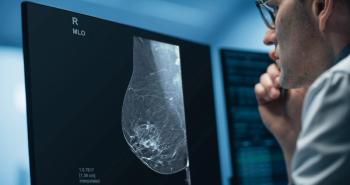
Researchers Eye Antioxidant Pill to Protect Against Radiation Damage
As the radiology community focuses on lowering the dose of medical imaging scans, some researchers are eyeing a pill that would protect against radiation damage.
As the radiology community focuses on lowering the dose of medical imaging scans, some researchers are eyeing a pill that would protect against radiation damage.
The push for using an
“We’ve always focused on lowering the does,” said Kieran Murphy, MD, professor and vice chair, director of research and deputy chief of radiology at the University of Toronto and University Health Network in Toronto, Ontario. “There will be a point where we start to lose information. If we can lower the impact of the dose, we can have an additional benefit. And if we can decrease the risk of screening studies, we can improve the benefit of what we do.”
Murphy lead a small clinical trial that showed a formulation of antioxidants taken orally before CT scans minimizes cell damage by as much as 50 percent.
The Canadian researchers have two approaches: an oral combination taken prior to a scheduled scan, and an inhaled gas for those with urgent scans, Murphy said. The oral antioxidant combination would not require FDA approval and carriers no short-term risks, he said. The antioxidant combination neutralizes so-called free radicals, which can react with cellular components and cause cell damage.
The next step for these researchers is to conduct a larger clinical trial, Murphy said. Theirs is a similar approach to one being taken by a group at Premier Micronutrient Corp. that developed the BioShield Radiation Pill. Having at least two groups researching the protective antioxidant formula (albeit different, proprietary formulas) reinforces the validity of the approach, researchers said.
“It very much confirms that we are both on the right pathway on this,” said James Ehrlich, MD, a clinical associate professor at the University of Colorado and part of the team behind BioShield.
BioShield similarly aims to
The next step for BioShield, which is already commercially available, is also a larger clinical study, which will help them penetrate the radiology market, Ehrlich said. Many in the radiology community have been skeptical of the approach, he said, saying it sounds too good to be true.
In a
Newsletter
Stay at the forefront of radiology with the Diagnostic Imaging newsletter, delivering the latest news, clinical insights, and imaging advancements for today’s radiologists.




























